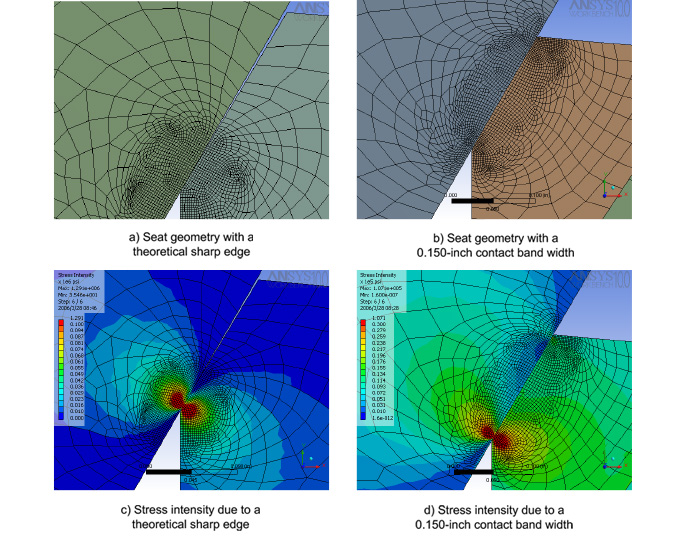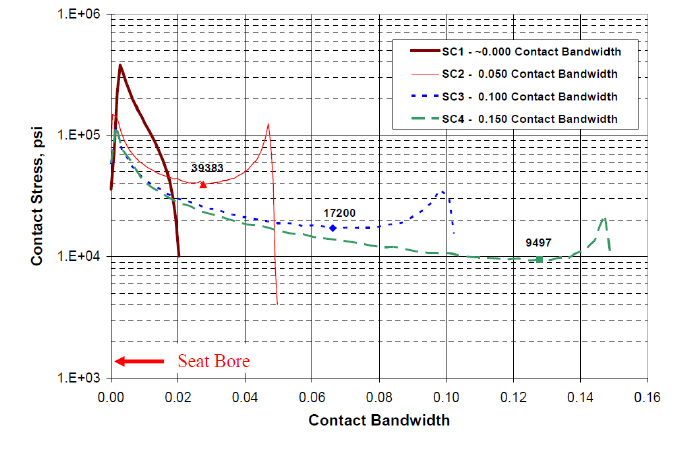Contact Bandwidth, Contact Pressure and Maintenance Practices
Poorly or improperly defined lapping criteria often leads to unsatisfactory variability in seat sealing performance. KEI™ used FEA to predict the stress intensity and contact pressure for several modeled seat band widths to help identify the root-cause, illustrate the importance of good maintenance practices, and help establish meaningful acceptance criteria for lapping.
The contact pressure and effective contact band width based on the initial lapped interface and elastic deformation of the seat due to seat load was predicted for a range of contact bands widths. The results are provided in Figure 2 and illustrate the importance of controlling the lapping process to achieve an optimal contact band width so that a robust seal – high contact stress over a sufficient width – is maintained.


